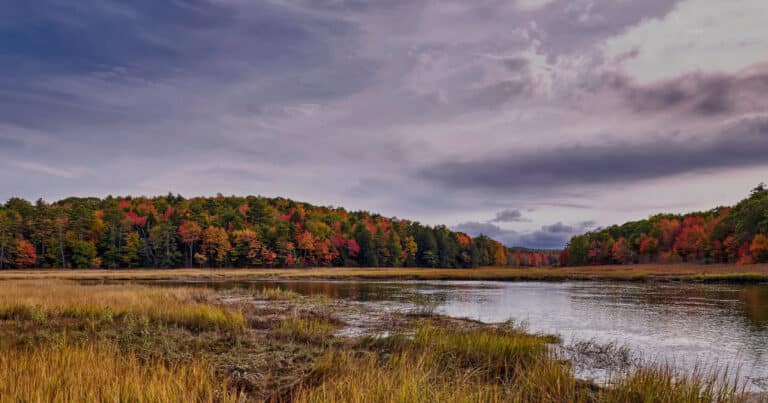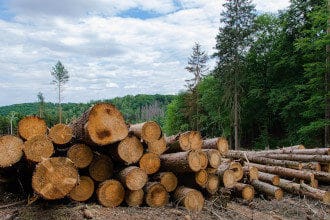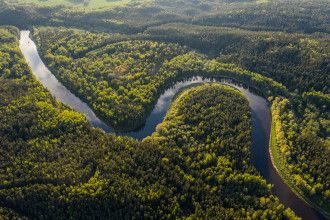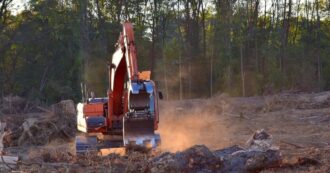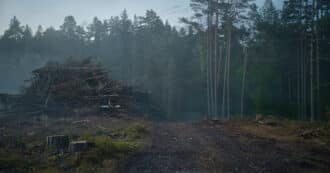By Matthew Mausner – Deforestation is one of the most pressing issues of our time. The effects of deforestation are disastrous, with some comparing the deforestation of the Amazon rainforest, for example, to destroying “the lungs of the planet.” Due to deforestation we experience global warming, soil erosion, forest fires, flooding and so many other issues around the world. We must wonder, how can we stop deforestation?
Our recent post, causes of deforestation focused on the major causes of deforestation. This post will focus on solutions to deforestation.
Solutions to Deforestation
The solution may be easier than we realize. For example, if cooking fuel akin to western camping-stoves were made available to the 2 billion people at the fringes of the Sahel and central Asia, this could disproportionately reduce deforestation.
Similar to recognizing these 2 billion people’s fundamental need for cooking fuel, recognizing the sources of deforestation can be the best way to finding the solutions to deforestation.
Deforestation Solutions Reduce Greenhouse Gas Emissions
Burning trees and fossil fuels increases greenhouse gases. According to the United Nation’s Food and Agriculture Organization (FAO), the 33 million acres of forestland which are lost yearly around the world are responsible for 20% of human-caused greenhouse gas emissions. But by protecting trees from being cut down, trees can breathe in greenhouse gases like carbon dioxide and make our atmosphere healthier. Stopping deforestation is a great natural way to take action and help stop climate change.
The Solutions to Deforestation
There are a number of ways to stop deforestation that will make an impact on the world’s environment. The solutions will save wildlife, slow down climate change and will have many long term affects on our one and only planet!
Solutions to Deforestation: Reducing the Impact of Palm Oil
According to the WWF, “Palm oil has been and continues to be a major driver of deforestation of some of the world’s most biodiverse forests, destroying the habitat of already endangered species like the orangutan, pygmy elephant and Sumatran rhino” (WWF). By either using products free of palm oil, or looking for palm oil with certification that proves it has been harvested sustainably (like RSPO), we can address a major cause of deforestation.
Solutions to Deforestation: Carbon Credits and Incentives
One of the biggest global policy initiatives taken by many global agencies is an international system of ‘carbon credits‘. This is designed to incentivize countries with forests to not cut them down, and even to plant trees and tropical forests, by ‘offsetting’ pollution in wealthier countries or companies.
Any company or country that is polluting with fossil fuels pays various amounts into a carbon offset fund, and the money goes to conserving forests, especially in places that have the lushest ‘carbon sink’ forests like tropical forests and the jungles of the tropics.
Solutions to Deforestation: Changing Land Use
Wherever possible, conservation efforts should seek to both protect forests and incentivize the desperate populations that might misuse the land or cut down the forests to find other productive activities that are more sustainable. For example, there has been a flood of illegal logging in Brazil, “by ranchers, loggers, miners, and land grabbers who seek to profit from the occupation and exploitation of public forest lands” (ScienceMag).
In Kenya, after failed ‘absolute’ conservation efforts only encouraged poachers, an innovative cooperation was worked out with local Masai ranchers to double as preservers of the Serengeti and as anti-poaching police, leveraging their unique local knowledge and their own desire to protect their herds and game.
In New England, regions that had been clear-cut for lumber in colonial times, then heavily farmed and ranched in the 1700s and 1800s, were left with exhausted soils. They were no longer productive for agriculture and fell into almost complete disuse. This benign neglect gradually resulted in regrowth of lush forests over the last 100 years that now blanket land from Maine all the way to upstate New York. This was an accident of history and economics, but there is hope that this can serve as a model for more proactive planning about appropriate land use everywhere.
Solutions to Deforestation: Reforestation
How about just plant more trees? Direct reforestation is the policy in certain countries. Israel in particular, even since before its founding, has actively sought to replant forests that had not flourished since the Romans crushed the Jewish revolts (cutting down the trees Jewish guerillas used for cover) almost 2,000 years ago. Now Israel is one of only two bioregions on earth (along with New England) that is significantly more forested than 100 years ago.
As leading Israeli ecologist and Member of Parliament Dr. Alon Tal writes, “A land that was synonymous with erosion, desertification, and human neglect is enjoying an environmental makeover. This exercise in ecological rehabilitation occurred in a country where 97 percent of the ground is classified as ‘drylands,’ making it particularly relevant for half of the planet where water will always be scarce.” Now more and more countries are seeking to follow this example, planting lots of trees which help trap and build topsoil, create cover for shade, cooling, and biodiversity under their canopies, improve the quality of life, and absorb carbon from the air.
The World Economic Forum has announced a One Trillion Trees Initiative and the Trump Administration in January 2020 announced its commitment to coordinate support with the One Trillion Trees Interagency Council, bringing the world’s largest economy into comprehensive cooperation with this aspirational project.
Solutions to Deforestation: Reforestation Case Studies
Ecological engineering may provide hope for reforestation of logged or degraded regions in Costa Rica, Peru and Brazil. However, these ecological engineering principles can only achieve limited progress if other trends in those societies can’t be stopped. Those projects saw a lot of progress in their first 10 years but have not been able to prevent later expansion of cities, ranching and industry that subsequently re-cleared those very re-planted forests in the 2010s.
Pakistan and the African Sahel have been expanding ‘Green Wall‘ type eco-engineering plans to stave off desertification, capture carbon, provide drinking watersheds and jobs, and many other benefits. These approaches combine traditional techniques with modern technological and breeding methods to plant hardier breeds, supplement with irrigation where necessary, and encourage large forests with impacts on many aspects of their ecosystems, from topsoil to moisture to more stable agricultural bases.
Solutions to Deforestation: Sustainable Reforestation
Sustainable logging practices, whether in Indonesia or Oregon, usually include replanting forests, tree farms, and the avoidance of clear cutting in favor of selective culling that does not negatively impact the health of the forest as a whole.
Efforts to stem desertification in regions across the Sahel, Israel, India, central Asia, and the American southwest all involve massive efforts to plant forests, preserving topsoil whilst preventing erosion. Raising standards of living across the globe leads to higher levels of education resulting in increased environmental awareness, building support for sustainable policies.
There is even counterintuitive hope that increased carbon in the atmosphere may actually create conditions for forests to grow, since carbon dioxide is ‘plant food’. All hope is not yet lost for the future, if we can see the forest for the trees.
Spiritual Thinking On Deforestation
Trees have spiritual roots! Trees are given great great respect in almost every religion, since pagan times. Non religious people also find so much meaning in trees. However much they are destroyed they find a crack in which they can regrow. This gives people the strength to know that they too can survive difficulties and even thrive again. Just like all living beings, trees breathe and connect to each other as a community, always used as a symbol of life and the embodiment of hope.
Religious Thinking On Deforestation
Hinduism sees trees as the givers of knowledge and enlightenment and the Rig Veda instructs against cutting down trees or uprooting them as they provide protection to living beings.
Tree planting is seen as a form of charity in Islam and trees are seen as worthy of respect and care. In the Islamic holy scriptures, there is a story of boy throwing stones at a date palm to gather fruits. The Prophet Mohammed gave the boy a gentle chastisement, telling him to eat what falls, without harming the tree.
Trees are central to Judaism and Christianity. In the garden of Eden, the original paradise, they grew in abundance. Additionally, sacred trees were located at the center of the Garden of Eden, the Tree of Knowledge of Good and Evil and The Tree of Life. Moreover, there is a prohibition in the Bible against cutting down fruit trees and an account of the dangers of logging.
Eco Bible Speaking On Deforestation
Rabbis Yonatan Neril and Leo Dee comment in “Eco Bible Volume 2” about the dangers of deforestation from a verse describing an accidental death during logging: Deuteronomy 19:5 –
For instance, a man goes with his neighbor into a grove to cut wood; as his hand swings the ax to cut down a tree, the ax-head flies off the handle and strikes the other so that he dies. That man shall flee to one of these cities and live. This verse relates to the profound danger to people, from multiple causes, of cutting trees. Even today, logging is the profession in the United States with the most number of fatalities, and 25 percent higher than the next most dangerous profession – fishing. Technology has not succeeded in making logging safe for workers.
Logging also threatens whole populations. The UN Global Forest Resources Assessment found the world’s forests decreased by a full 1 percent of the world’s surface in 25 years, mainly in South America and Africa. We have reached the moment when human impact is causing the Amazon rainforest to release more climate-warming gases than it stores. People logging, mining, and clearing forest for agriculture and ranching have weakened the rainforest’s natural ability to take in carbon dioxide and serve as the main lung on planet earth.
Since this verse speaks of unintentional damage, we can learn today to be especially careful about unintentional damage. We are unintentionally contributing to rainforest destruction in using paper, cardboard, and wood unnecessarily. While forces such as the Covid-19 pandemic force many people to shop online, they may not realize shopping online is seven times more cardboard-intensive than shopping in a store. Destruction of more and more trees for such paper products then contributes to species loss, decreased oxygen ordinarily released by trees, worsened air quality and global climate change.”
The solutions are not difficult to implement. Let us stop being the cause of deforestation, and become supporters and advocates for the solutions to deforestation.
* Featured image source

